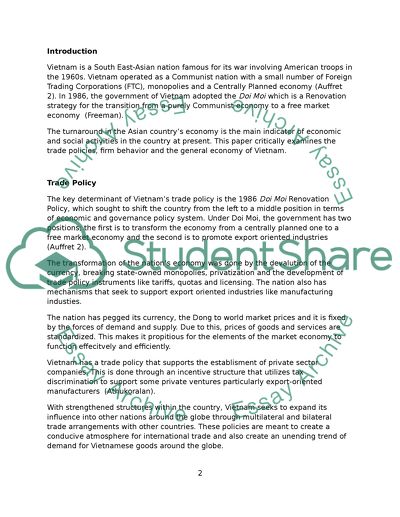Cite this document
(“Trade Policy, Firm Behavior, and Economic Development in Vietnam Case Study”, n.d.)
Trade Policy, Firm Behavior, and Economic Development in Vietnam Case Study. Retrieved from https://studentshare.org/miscellaneous/1577436-trade-policy-firm-behavior-and-economic-development-in-vietnam
Trade Policy, Firm Behavior, and Economic Development in Vietnam Case Study. Retrieved from https://studentshare.org/miscellaneous/1577436-trade-policy-firm-behavior-and-economic-development-in-vietnam
(Trade Policy, Firm Behavior, and Economic Development in Vietnam Case Study)
Trade Policy, Firm Behavior, and Economic Development in Vietnam Case Study. https://studentshare.org/miscellaneous/1577436-trade-policy-firm-behavior-and-economic-development-in-vietnam.
Trade Policy, Firm Behavior, and Economic Development in Vietnam Case Study. https://studentshare.org/miscellaneous/1577436-trade-policy-firm-behavior-and-economic-development-in-vietnam.
“Trade Policy, Firm Behavior, and Economic Development in Vietnam Case Study”, n.d. https://studentshare.org/miscellaneous/1577436-trade-policy-firm-behavior-and-economic-development-in-vietnam.


